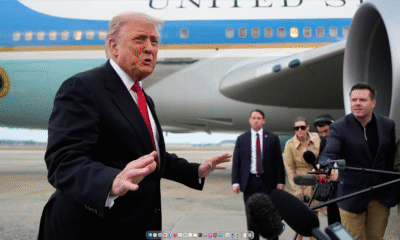Economy
Indian economy sailing in unchartered waters of pandemic and inflation
The recovering Indian economy is sailing through unchartered waters of rising COVID-19 cases, spiraling commodity prices and spiking inflation, though the lighthouse of sustainable growth remains visible.
As 2022 sets in, a raft of developments will set the tone for the domestic economy, which is projected to grow more than 9% in the current fiscal ending March 2022. India’s continuing massive vaccination drive and precaution doses starting for select categories of people this month will provide a firewall against any steep spike in COVID-19 cases amid the emergence of the omicron variant.
Experts believe the economy is expected to see a strong recovery in the coming months and even go past the pre-COVID levels unless the pandemic plays spoilsport. In the 2021 April-June quarter, the economy recorded a whopping 20.1% growth but then it came mainly on the back of the base effects as GDP contracted 24.4% in the year-ago period. Nevertheless, an 8.4% growth in the second quarter (July-September) was more meaningful as it indicated sustained recovery.
India’s exports have picked up in recent months, which is also an indicator of substantial recovery in the economy. Sanjiv Mehta, FICCI President, said that a likely growth of over 9% in the current fiscal ending March 2022 was good but more important would be to achieve sustained growth of 8% over a long period of time. He believes sustained growth is needed for accelerating job creation, removing poverty, and bringing in prosperity in rural and semi-urban areas.
Global ratings agency Fitch expects the services sector to show a strong reading amid the lifting of most restrictions. It has cut the FY22 (financial year ending March 2022) GDP growth forecast to 8.4% (-0.3pp). “GDP growth momentum should peak in FY23, at 10.3% (+0.2pp), boosted by a consumer-led recovery and the easing of supply disruptions.”
Meanwhile, a dovish monetary policy by the RBI has also played a key part in stimulating the overall economic activities. With global inflationary trends slightly on the upward trajectory, how long the RBI will continue with its relatively loose monetary policy will be closely watched by the markets. The central bank has kept the benchmark lending rates or repo rates unchanged since May 2020.
Also Read: SpiceHealth CEO Avani Singh features in 2021 ‘Bloomberg Ones to Watch’ annual list
Among others, the low-interest rates have provided a much-needed boost to the real estate and other sectors of the economy. According to an assessment by the RBI, India’s real GDP bounced back strongly in Q2:2021-22, hitting a growth of 8.4% over a favorable base and exceeding the Reserve Bank’s estimates of 7.9%. The GDP surpassed that of Q2:2019-20 by 0.3%.
Furthermore, the recovery in aggregate demand remained broad-based in the Government Final Consumption Expenditure (GFCE), Gross Fixed Capital Formation (GFCF) and exports. The central bank also noted that Private Final Consumption Expenditure (PFCE) too posted an uptick on a year-on-year basis due to to faster resumption of contact-intensive services and restoration of consumer confidence. The RBI pointed out that India’s exports continued to register an impressive recovery, emerging as a key driver of the highest growth trajectory.









































Pingback: Experts warn that the new variant, omicron is truly everywhere.